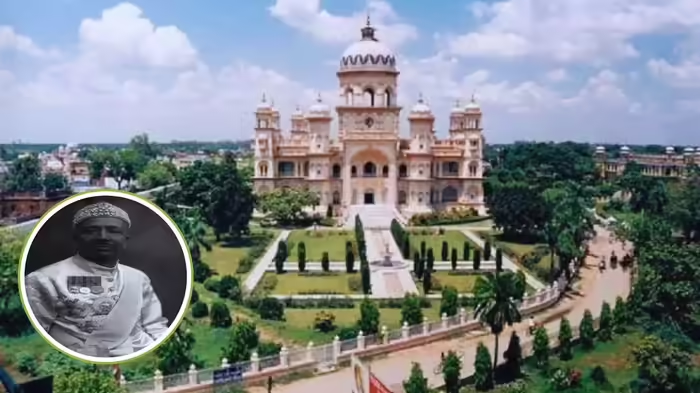
Rampur, Uttar Pradesh: Known today for its political significance and leader Azam Khan, the city of Rampur also carries a rich legacy of Nawabs, royal splendor, and cultural heritage. Established in 1774 by Nawab Faizulla Khan, the Rampur princely state played a pivotal role in shaping the politics and culture of Rohilkhand and Awadh for over 150 years. Its real charm, however, lies in the grandeur of the Nawabs, their palaces, and a unique private railway line that once ran directly to the royal palace.
Historical Significance
Rampur’s history is inseparable from its Nawabs, who were patrons of art, music, and architecture:
- 1774: Nawab Faizulla Khan laid the foundation of Rampur state, renowned for his diplomatic acumen.
- 1794–1816: Muhammad Ali Khan and Ahmed Ali Khan strengthened administration and borders.
- 1816–1855: Nawab Ghulam Mohammad Khan ushered in Rampur’s musical golden era.
- 1855–1887: Nawab Yusuf Ali Khan made Rampur a literary hub, establishing the Raza Library.
- 1887–1930: Nawab Hamid Ali Khan, the architect of modern Rampur, built grand palaces, gardens, and roads.
- 1930–1966: Nawab Raza Ali Khan, the last pre-independence ruler, preserved the state’s royal legacy.
The Palace: A World of Mystique
Rampur Fort was the center of royal life, echoing with classical music performances attended by maestros like Ustad Bismillah Khan. Within the palace lay a secret seven-layered vault holding treasures and confidential documents, accessible only to the Nawab and the head of the security detail. Local lore speaks of a secret tunnel leading from the palace to the outskirts of the city, a covert passage used during Mughal-Rohilla conflicts.
A Palace with a Private Railway Station
Nawab Hamid Ali Khan introduced a 40-kilometer-long private railway line from Milak to the Rampur palace, culminating in a station exclusively for the royal family. The 1925-model royal train had four carriages, including a bedroom, ornate dining area, modern kitchen, entertainment room, and quarters for staff and guards—making it a moving palace rather than just a means of travel. Each journey was coordinated with government railway protocols, and even after independence, the Nawabs continued using the train. During Partition, the train helped transport people safely to Pakistan. Two of its carriages were later handed to the government, while the remaining two remained in the palace. The station, still known as the Nawab Railway Station, is valued at over ₹113 crore in court surveys.
The Royal Legacy
Rampur’s Nawab family’s assets, including gold and silver beds, gem-studded thrones, antique weapons, and priceless artifacts, totaling around ₹2,700 crore, were eventually divided under Supreme Court supervision. The state’s history is not just about rulers but also about culture, opulence, and secrecy. The private palace railway, hidden chambers, and stories of the Nawabs continue to make Rampur one of India’s most unique princely legacies.
Rampur’s history is not merely read—it is felt, through the splendor and secrets of its Nawabs.
Discover more from SD NEWS agency
Subscribe to get the latest posts sent to your email.